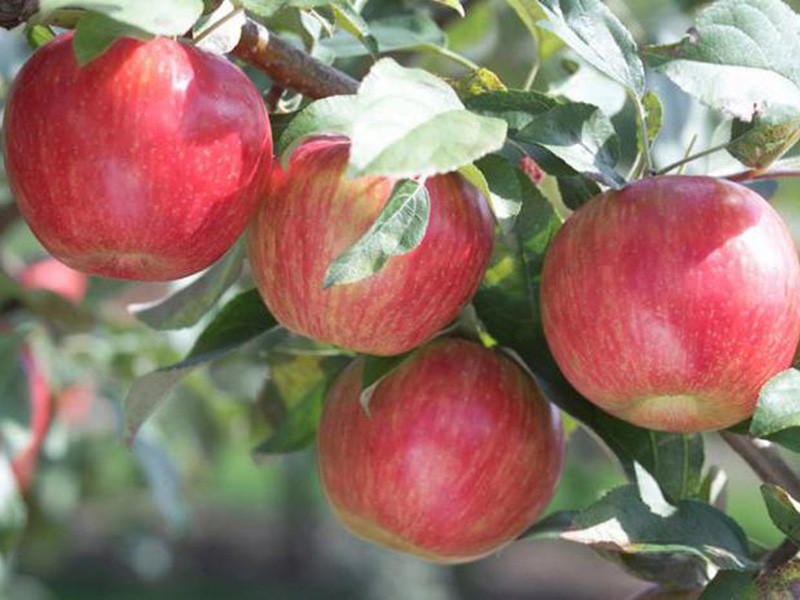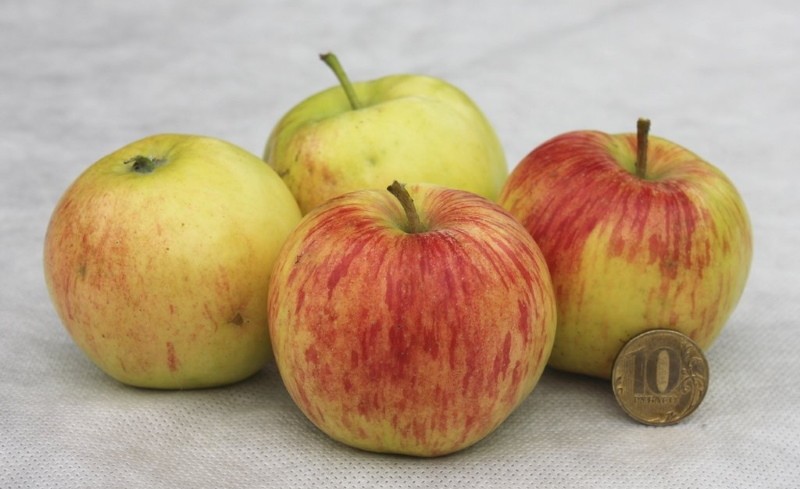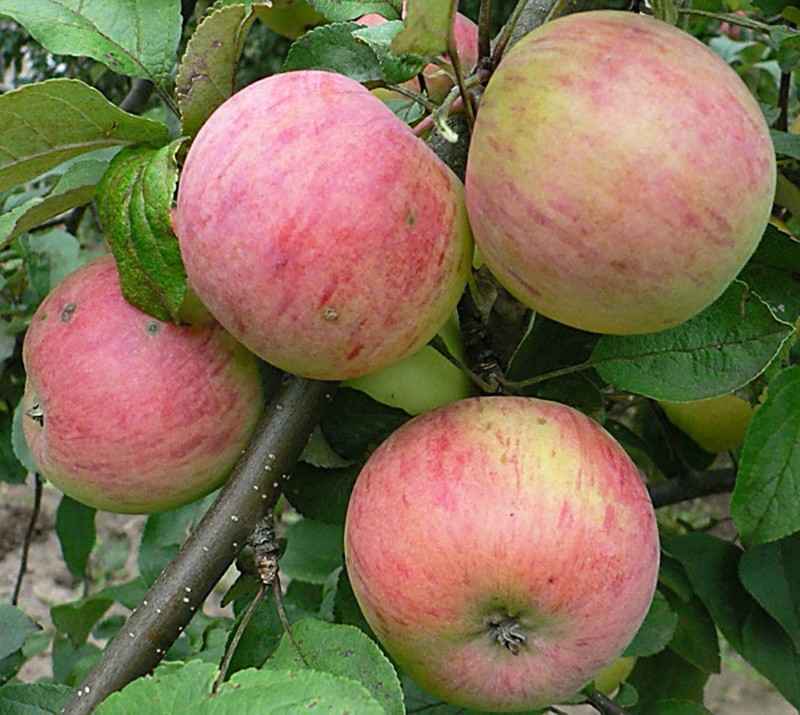Apple tree Saffron - description of the variety of one of the best universal types of culture
 If gardeners from the southern regions do not care how their apple trees will endure the winter, then for Altai and Siberia this indicator plays a major role in choosing seedlings. However, the Saffron apple tree, the description of the variety of which we will consider today, can satisfy both parties. The variety combines good yield, dessert taste and versatility with its high adaptability. When creating this species by breeders, it was conceived to get an apple tree that is resistant to temperature extremes. And most importantly, which can bear fruit abundantly in cold climates, yielding tasty fruits.
If gardeners from the southern regions do not care how their apple trees will endure the winter, then for Altai and Siberia this indicator plays a major role in choosing seedlings. However, the Saffron apple tree, the description of the variety of which we will consider today, can satisfy both parties. The variety combines good yield, dessert taste and versatility with its high adaptability. When creating this species by breeders, it was conceived to get an apple tree that is resistant to temperature extremes. And most importantly, which can bear fruit abundantly in cold climates, yielding tasty fruits.
Apple Saffron - variety description, general characteristics

The trees were especially liked by the owners of private gardens, because they do not take up much space. A rounded and not very dense crown is usually about 4 m high, so the apple tree is considered to be of medium height. A branched root system helps the tree to receive life-giving moisture even in dry periods.
If you properly care for and cut the apple tree on time, you can harvest up to 250 kg annually. Although, in general, the variety does not belong to the leaders on this issue and occupies an average position. This also applies to the size of the fruit - rounded and slightly flattened apples weighing about 150 g. They have a dense skin, visible ribbing and a striped red blush on a yellow-green background. The creamy pulp is very juicy, but with a well-felt sourness. The fruits are versatile and have good keeping quality.
Saffron is an apple tree with high adaptive qualities that quickly adapts to climate change. It is classified as a winter-hardy species, but the apple tree is still not frost-resistant. The tree will endure a short-term drop in temperature to minus 35 ° C, but not for long. If the whole winter passes in this mode, the apple tree needs shelter.
Varieties of Apple Saffron
 Despite the fact that the goal of the breeders was to get exactly late apple tree, the work did not stop there. In subsequent years, scientists continued to improve the characteristics of the variety. And they bred apple trees with different ripening periods, at the same time increasing their immunity and even increasing the size of the fruits.
Despite the fact that the goal of the breeders was to get exactly late apple tree, the work did not stop there. In subsequent years, scientists continued to improve the characteristics of the variety. And they bred apple trees with different ripening periods, at the same time increasing their immunity and even increasing the size of the fruits.
Today there are more than 20 varieties of the variety, but most often the following types of Saffron are grown:
- Saratov;
- Winter;
- Parmen;
- Pippin.
Saratov Saffron
 The variety was bred and then zoned in the Saratov region. Grown on a vegetative rootstock, it has a taller tree, better yield and resistance to drought and frost. Fruiting occurs 4 years after planting the seedling. The apples are oval, weigh up to 140 g, ripen in September and can be stored for another 3 months.Ripe fruits have a yellow peel with an orange-red strip, the pulp is fragrant, with sourness.
The variety was bred and then zoned in the Saratov region. Grown on a vegetative rootstock, it has a taller tree, better yield and resistance to drought and frost. Fruiting occurs 4 years after planting the seedling. The apples are oval, weigh up to 140 g, ripen in September and can be stored for another 3 months.Ripe fruits have a yellow peel with an orange-red strip, the pulp is fragrant, with sourness.
Winter Saffron
 Bred on a dwarf rootstock and zoned in the middle lane. Demanding to the soil (does not like sour), bears fruit from the 5th year of life. Apples ripen at the end of September. They are round, small, about 50 g, but very juicy and aromatic. Moreover, the sweetness and smell acquire already during storage. But they do not lose it until the last for another six months.
Bred on a dwarf rootstock and zoned in the middle lane. Demanding to the soil (does not like sour), bears fruit from the 5th year of life. Apples ripen at the end of September. They are round, small, about 50 g, but very juicy and aromatic. Moreover, the sweetness and smell acquire already during storage. But they do not lose it until the last for another six months.
Parmen Saffron
 The variety is also called Summer Saffron, it ripens in August. A distinctive feature of the variety is its resistance to shedding of fruits due to excess moisture. Apples are medium in size, weighing up to 100, round, green with a golden hue and crimson stripes. The pulp has more sugar and a light spicy aftertaste. But the shelf life is short - no more than a month.
The variety is also called Summer Saffron, it ripens in August. A distinctive feature of the variety is its resistance to shedding of fruits due to excess moisture. Apples are medium in size, weighing up to 100, round, green with a golden hue and crimson stripes. The pulp has more sugar and a light spicy aftertaste. But the shelf life is short - no more than a month.
Pepin Saffron

Late winter dessert variety with long shelf life and high immunity. Apples ripen in early November and can stay until May without losing their taste, but only improving them. Fruits weighing up to 120 g have a conical shape, without ribbing. The skin is yellow with a red blush.
Apple tree medium Pepin Saffron
https://www.youtube.com/watch?v=mTrvNcsr1e8